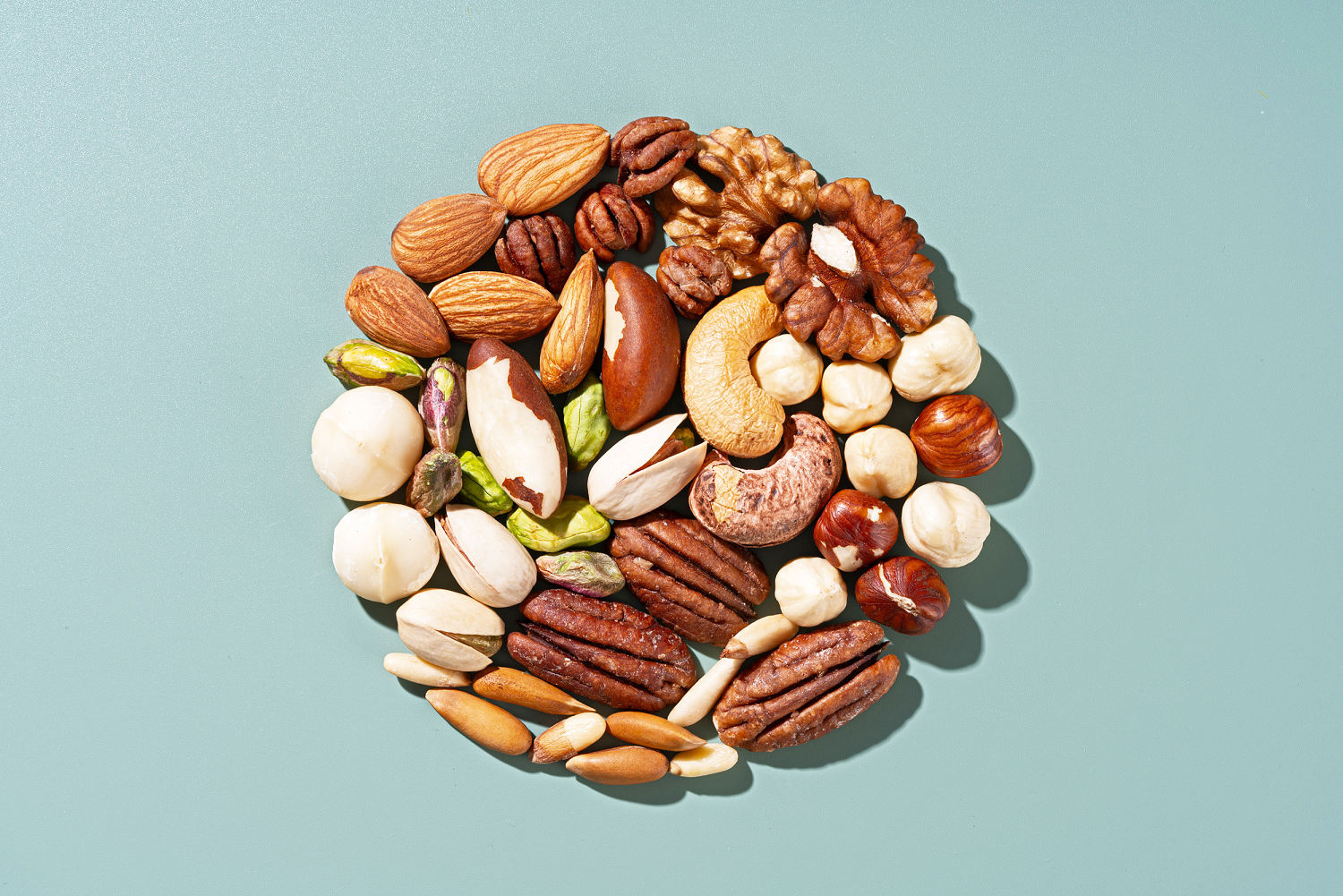Nuts are a salty, crunchy and surprisingly healthy snack. Packed with , some types of nuts can be a great way to meet your daily protein goals while loading up on vitamins and minerals. In addition to plant-based protein, nuts are a good source of many other healthy nutrients.
That includes heart-healthy unsaturated fat, , fiber, folate, B vitamins and magnesium, says Natalie Rizzo, registered dietitian and TODAY nutrition editor. In particular, "vitamin E, which is beneficial for skin health, is a big one that you’ll find in nuts," Rizzo says. And while some nuts may shine when it comes to protein, "every nut has a different nutrition profile," she adds.

Brazil nuts, for instance, are an , and you'll find in almonds. "Basically, if you eat a variety of nuts, you will get a variety of micronutrients," Rizzo says. So, regardless of their protein content, nuts can be a healthy food for a multitude of reasons.
But, when you're really , Rizzo recommends reaching for a few specific high-protein nuts. When it comes to protein, Rizzo says, these three nuts come in basically at a tie: With 6 grams of protein per ounce, are among the highest-protein nuts you can find. In that serving, you'll also get 4 grams of gut-healthy fiber as well as half your daily serving of vitamin E and 20% of your daily magnesium, which has benefits for sleep and heart health.
Pistachios also provide about 6 grams of protein per ounce along with 3 grams of fiber and a variety of B vitamins. They'll also of two antioxidants, lutein and zeaxanthin, which are also responsible for the nut's vibrant green color — and have benefits for eye health. Plus, pistachios are known to contain a , which can aid in sleep.
While technically a legume rather than a nut, peanuts are , so they will help keep you feeling full. With around 7 grams of protein per ounce, than the other nuts on this list. And peanut butter is a go-to among dietitians.
While nuts are tasty and provide some protein, "they are also high in fat and calories," Rizzo says, and some salted varieties contain a . So, first, keep your serving size in mind. An ounce of nuts is roughly equivalent to a handful.
That's also why you don’t want to rely on nuts as the primary source of protein in your day. Instead, think of nuts as a good source of plant-based protein for a snack or topping. "They also make a crunchy addition to salads, oatmeal, smoothie bowls and grain bowls," Rizzo says, "and you can use them as a crispy breading for proteins.
" Try some , for instance. Nut butters, like , are another great way to get nuts in your diet. Try using them on toast or in baking or sauces, Rizzo suggests.
However, some varieties of nut butters can contain added sugar and oils that are best to avoid, as . "Look for ones that are just the ground nut with a little bit of salt," Rizzo advises..
Health

Which nuts have the most protein? Dietitian shares 3 top picks

High-protein nuts are also salty, crunchy and packed with vitamins and minerals. These are the three top picks nuts with protein, according to a dietitian.















